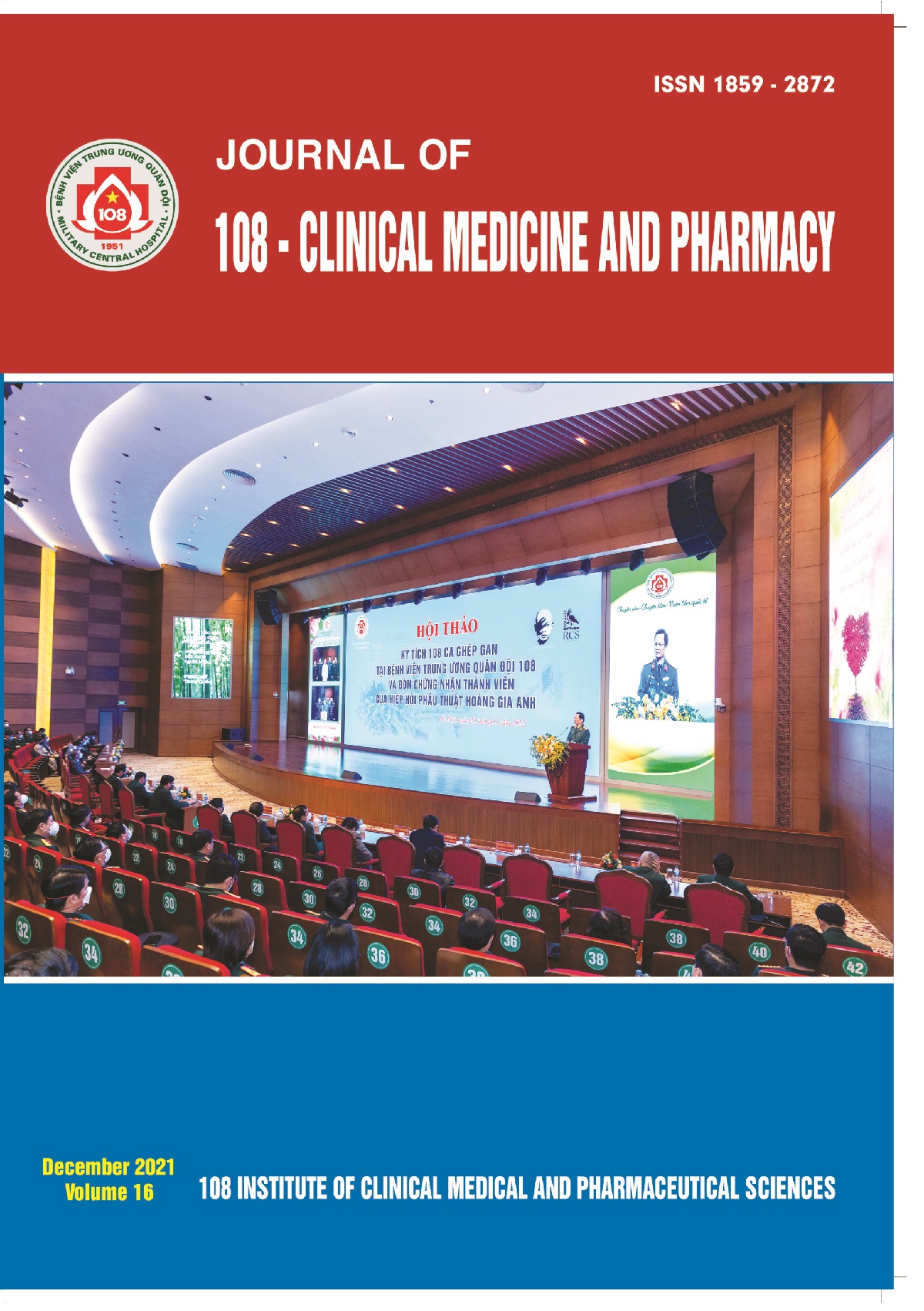The radiological outcomes of short-segment pedicle screw fixation combined with transforaminal interbody fusion for treatment of thoracolumbar burst fracture
Main Article Content
Keywords
Tóm tắt
Objective: This study aims to evaluate radiological outcomes of short-segment pedicle screw fixation with transforaminal interbody fusion (TIF) using bone chip graft for treatment of unstable thoracolumbar burst fracture, Denis type IIB. Subject and method: The data in this study were retrospectively collected from all patients with isolated unstable thoracolumbar burst fractures treated by posterior short segment pedicle screw fixation and TIF from January 2013 to January 2017. All patients were followed up for a minimum time interval of 1 year. For radiologic outcome evaluation, a loss percentage of anterior vertebral body heights (%ABC), vertebral kyphotic angle (VKA) and regional kyphotic angle (RKA) were collected preoperatively, postoperatively and at final follow-up. Result: There were 36 patients who met the inclusion criteria with a mean follow-up duration of 53 months (range, 17-73 months). The mean % ABC, VKA and, RKA at the time of admission were 49.9%, 24.6o and 19.7o, respectively. These values were 17.6%, 11.5o, 8.5o postoperatively, and 27.5%, 14.4° and 14.1° at final follow-up, respectively. Fusion rate at final follow-up was 91.7% based on Bridwell’s criteria. There were 6 patients (16.7%) with hardware failure at final follow-up. Conclusion: Short-segment pedicle screw fixation with TIF using bone chip graft is an effective surgical management for unstable thoracolumbar burst fracture with the acceptable radiological outcomes in Vietnamese patients.
Article Details
Các tài liệu tham khảo
2. McLain RF, Sparling E, Benson DR (1993) Early failure of short-segment pedicle instrumentation for thoracolumbar fractures. A preliminary report. J Bone Joint Surg Am 75(2): 162-167.
3. Schmid R, Krappinger D, Blauth M, Kathrein A (2011) Mid-term results of PLIF/TLIF in trauma. Eur Spine J 20(3): 395-402.
4. Wang L, Li J, Wang H et al (2014) Posterior short segment pedicle screw fixation and TLIF for the treatment of unstable thoracolumbar/lumbar fracture. BMC Musculoskelet Disord 15: 40.
5. Domenicucci M, Preite R, Ramieri A et al (1996) Thoracolumbar fractures without neurosurgical involvement: Surgical or conservative treatment? J Neurosurg Sci 40(1): 1-10.
6. McCormack T, Karaikovic EE, Gaines RW (1994) The load sharing classification of spine fractures. Spine (Phila Pa 1976) 19(15): 1741-1744.
7. Bridwell KH, Lenke LG, McEnery KW et al (1995) Anterior fresh frozen structural allografts in the thoracic and lumbar spine. Do they work if combined with posterior fusion and instrumentation in adult patients with kyphosis or anterior column defects? Spine (Phila Pa 1976) 20(12): 1410-1418.
8. Kerttula LI, Serlo WS, Tervonen OA et al (2000) Post-traumatic findings of the spine after earlier vertebral fracture in young patients: Clinical and MRI study. Spine (Phila Pa 1976) 25(9): 1104-1108.
9. Verlaan JJ, Diekerhof CH, Buskens E et al (2004) Surgical treatment of traumatic fractures of the thoracic and lumbar spine: A systematic review of the literature on techniques, complications, and outcome. Spine (Phila Pa 1976) 29(7): 803-814.
10. Li K, Zhang W, Liu D et al (2016) Pedicle screw fixation combined with intermediate screw at the fracture level for treatment of thoracolumbar fracture: A meta-analysis. Medicine 95(33): 4574.
 ISSN: 1859 - 2872
ISSN: 1859 - 2872
